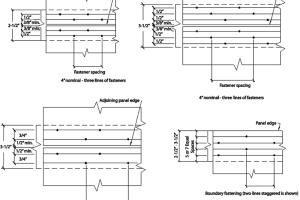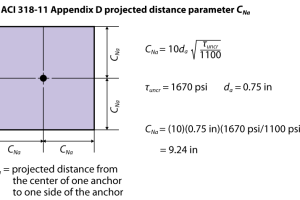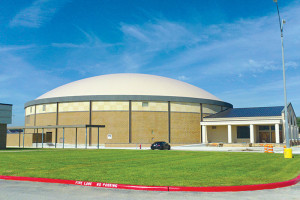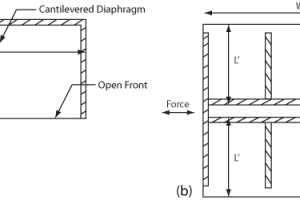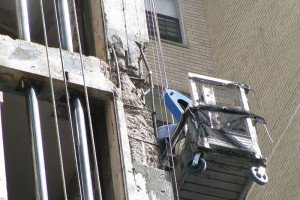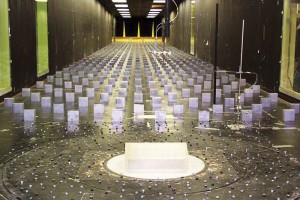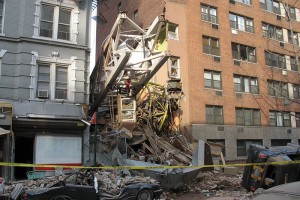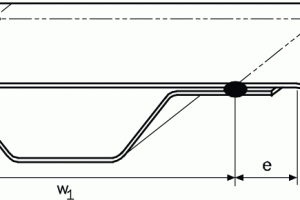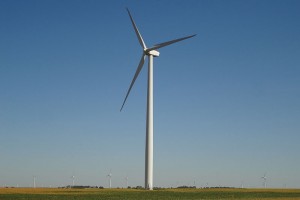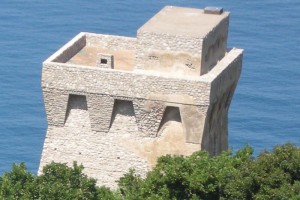This article is a two part series which discusses special inspection provisions for wood construction in the 2015 International Building Code (Part 1) and perspectives from several States (based on the 2012 International Building Code) on suggested handling of special inspections regionally (Part 2). …
Review Category : Codes and Standards
Provisions for the design of cast-in-place and post-installed anchors were introduced into the American Concrete Institute (ACI) publication Building Code Requirements for Structural Concrete (ACI 318) in 2002 (ACI 318-02) via Appendix D – Anchoring to Concrete. Since ACI 318 is referenced in the International Building Code (IBC), these provisions are thereby incorporated into IBC Chapter 19 – CONCRETE. …
Since the industry’s birth in the 1970s, storm shelter protection has risen from dank, dark, underground storm cellars found in backyards to above ground shelters fully integrated into residential or commercial construction. To enforce the proper design of these storm shelters, the ICC 500: ICC/NSSA Standard for the Design and Construction of Storm Shelters was developed. This article focuses on the structural provisions of the 2014 edition of ICC 500, how the provisions differ from typical structural design, the NSSA’s role in the development of the ICC 500, and new storm shelter trends. …
The 2015 Edition of Special Design Provisions for Wind and Seismic (SDPWS) was approved as an American National Standard on September 8, 2014, with the designation ANSI/AWC SDPWS-2015 (Figure 1). The 2015 SDPWS was developed by AWC’s Wood Design Standards Committee (WDSC) and contains provisions for design of wood members, fasteners, and assemblies to resist wind and seismic forces. …
Requirements for Evaluation, Repair and Rehabilitation of Concrete Buildings
It is estimated that the concrete repair industry in the United States generates between 18 and 25 billion dollars per year in construction spending. Unfortunately, repairs that do not perform as intended, either due to poor design or execution, require “repairs to the repairs”, which form a substantial component of the total figure. …
The wind load provisions in ASCE 7 can seem overly complicated and confusing. One common criticism is that more than one method is permitted to compute the main wind force resisting system (MWFRS) loads for rigid low-rise buildings (≤ 60 feet high), and that this can produce different results. This article discusses the key research and the development of these different MWFRS wind load methods, and draws heavily from the archives of the Metal Building Manufacturers Association (MBMA) – a key player in sponsoring research that has led to the understanding and codification of wind loads on low-rise buildings. …
This is Part 3 of a series of articles introducing illustrative examples of changes in design and construction codes, standards, regulations and practices that have followed catastrophic failures of construction cranes. Part 1, in the December 2010 issue of STRUCTURE®, focused on bridges, Part 2 in the April 2011 issue focused on buildings, and Part 3 is devoted to construction cranes.
It is a credit to our structural and construction engineering professions that failures have been and continue to be used to improve design, construction and regulatory practices. We do not just pay up, rebuild and walk away – we delve, we learn, and we improve. …
American Iron and Steel Institute (AISI) cold-formed steel design and construction standards are developed and maintained by the AISI Committee on Specifications for the Design of Cold-Formed Steel Structural Members and the AISI Committee on Framing Standards. …
Introducing ASCE/AWEA RP2011
In the CASE Business Practices article titled, “Too Many Codes Spoil the Design? Conflicts and Hidden Requirements Can Hurt You!” published in the September 2012 issue of STRUCTURE® magazine, Kirk A. Haverland wrote about a topic familiar to US engineers in the wind energy industry. Mr. Haverland describes the situation where a professional structural engineer “if presented with the opportunity to design a structure that is a little different” hopefully should be able to do his homework and “research the idiosyncrasies of industry practice, design requirements, different codes and standards, etc.” …
This article is provided by Ed Huston as the 2011 recipient of The Masonry Society’s Haller Award. Named for Professor Paul Haller, the Haller Award recognizes an individual engineer or engineering firm that has enhanced the knowledge of masonry in practice. Ed has an extensive background in masonry design, research, and teaching that has resulted in advancements in masonry design practice and code development. …

